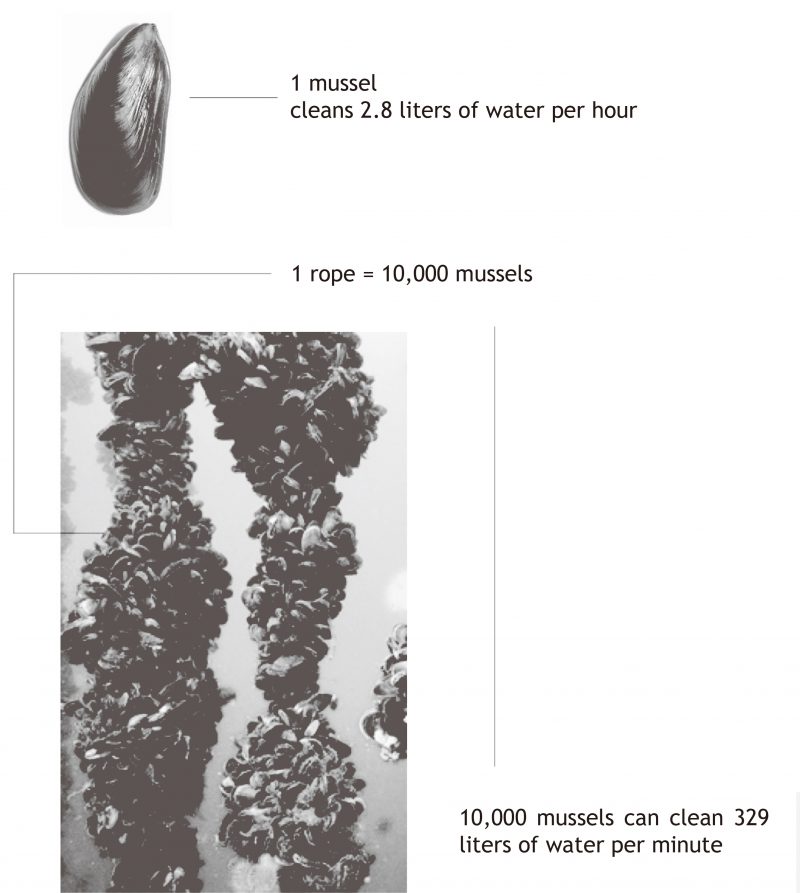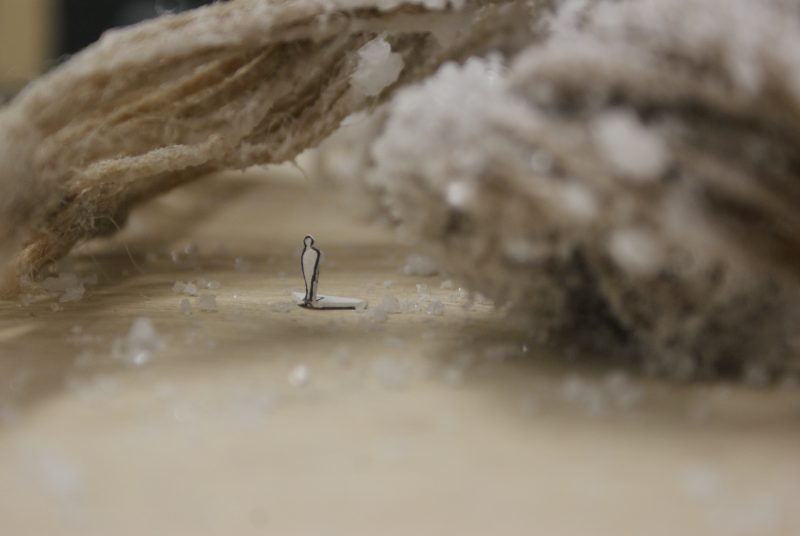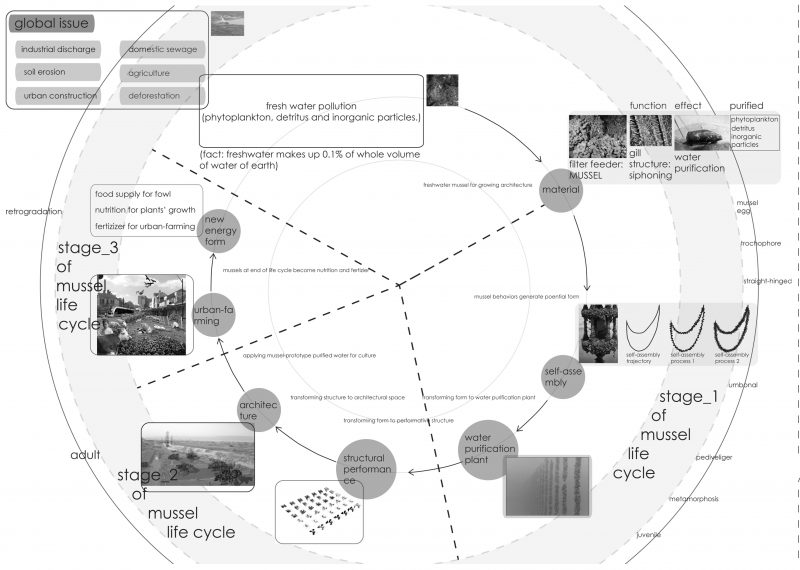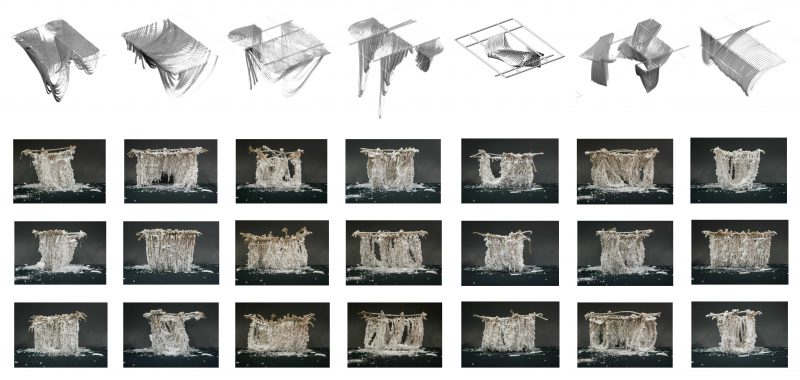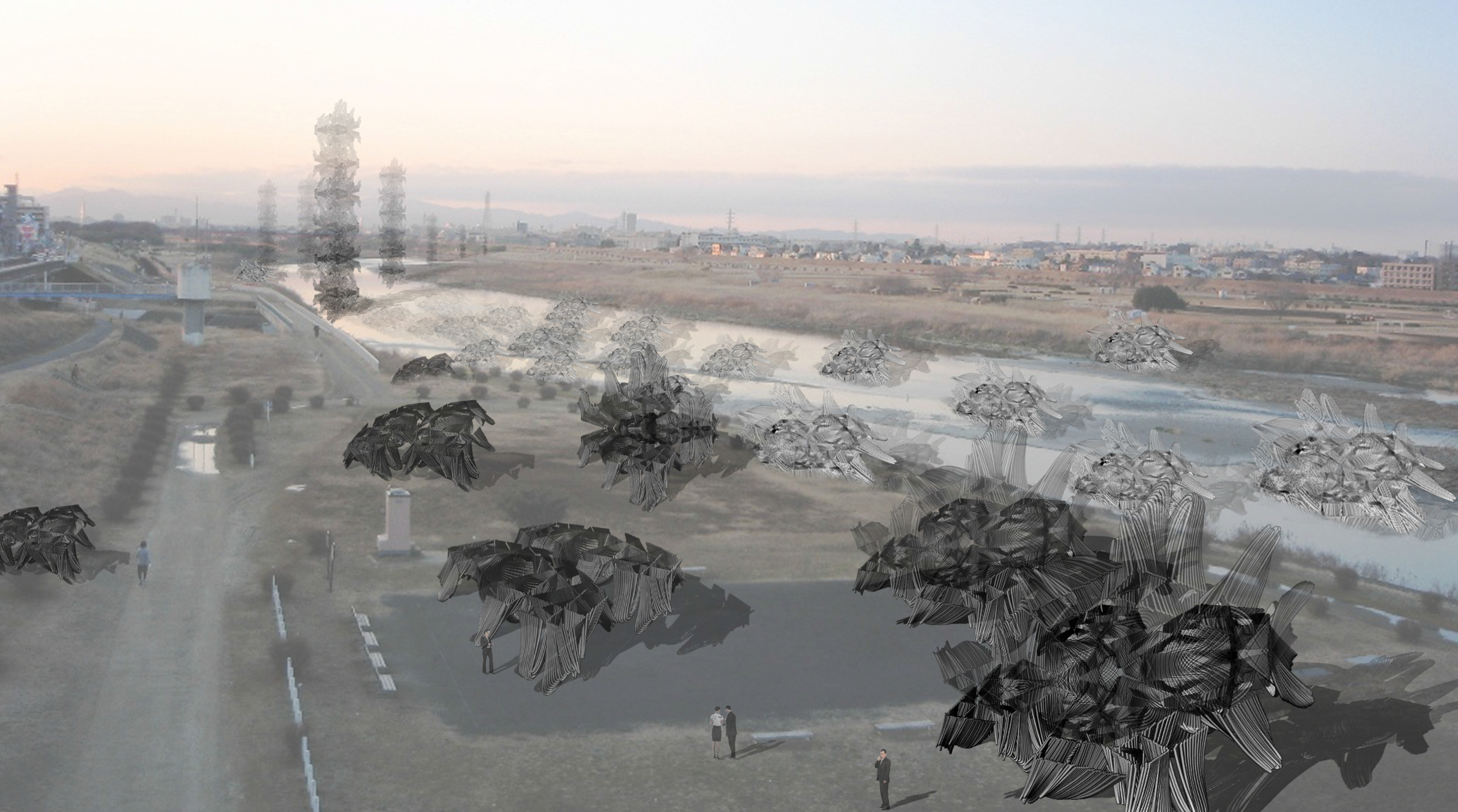
FILTE(R) SPACE
Students
• Olesia Biloborodko
• Trudy Ko
• Deli Zhao
Professor
• Yusuke OBUCHI
Course Assistants
• Toshikatsu KIUCHI
• So SUGITA
Mussels are used to produce architecture. There are three phases to the architecture. Phase 1 is the mussel growing phase, during which water is purified. Phase 2 is the mussel solidifying phase, where the mussels become a structural system and their architectural characters can be shaped. Phase 3 is the mussel decomposition phase, where energy is produced.
ムール貝を建築的に使用しています。この建築には、 3 つのフェーズがあります。フェーズ 1 は、ムール貝の成長段階で水が浄化されます。フェーズ 2 は、ムール貝の硬化段階による構造システムの形成と建築的要素が形作られる段階です。フェーズ 3 は、ムール貝が分解しエネルギーを生成するものです。
Mussels are shallow water organisms that live at a maximum depth of 10 meters. They are most abundant at or near low tide level, where their food supplies are most concentrated. One mussel can clean four liters of water per hour. In aggregate, there is potential for mussels to address issues such as industrial discharge, soil erosion, and domestic sewage. Polluted fresh water, which makes up just 0.1% of earth’s water could be cleansed with mussels. A waste water purification plant can clean 80,000 liters of water per day, the equivalent to 1000 mussels.
ムール貝。最大10 メートルの深さに生息する浅海生物。食糧が最も豊富な干潮もしくはそれ以下の深さで集中して生息している。1つムール貝で4リットルの水を1時間で浄化できます。ムール貝の群集体は、産業廃棄物、土壌浸食、生活排水などの問題を解決する可能性があります。地球上の水の0.1%を占めている汚染された淡水は、ムール貝で浄化することが可能です。従来の浄水場は、1日80,000リットルの水を浄化でき、ムール貝1000匹に相当します。
Mussels must be gathered together on a series of ropes to form catenary curves. The mussels self-assemble on lines and harden in place, during which phase the water is purified. Through this process, the mussel element (in aggregate) gains the ability to act as an architecture.
ムール貝を縄に収集することでカテナリー曲線の構造を形成する必要があります。ムール貝は一列に自己形成し、その場で硬化するうちに水を精製する段階に入ります。このプロセスで群集したムール貝の要素は、建築として機能する能力を得ます。
Once hardened into the catenary curve position underwater, the mussel lines gain the ability to perform as architecture. What was once a water purification system becomes a canopy structure. The catenary curves are removed from the water and are turned upside down to produce a canopy structure. In this phase of the project life cycle, the mussels’ primary function is to fulfill a role as architecture.
一度カテナリー曲線に固まったムール貝のラインは、建築的要素として機能できる可能性を得ます。かつて水浄化のためだったシステムは日陰/キャノピー構造になります。水中でカテナリー曲線に固定された硬化後のムール貝は、水揚げされた後に逆さまにすることでキャノピー構造になります。本プロジェクトのライフ・サイクルで、この段階でのムール貝の主な役割は、建築として機能することです。
In the third and final stage of the project life cycle, where the mussels decompose, the material becomes a resource for farming and agriculture by acting as a nutrition source. It is food supply for birds and fertilizer for farms. The project thus provides fresh water, a community gathering space, and a food/fertilization resource at different stages of the project life cycle.
このプロジェクトのライフ・サイクルの3番目で最後の段階でムール貝は分解し、肥料や栄養源として農作物と農業のリソースとして使用できます。鳥のための食糧、植物のための栄養分、農場の肥料などとして利用できます。したがって、このプロジェクトは、ライフ・サイクルの各段階を通して新鮮な水、食料や肥料のリソース、コミュニティの集会スペースなど提供できます。
